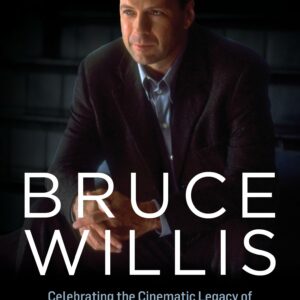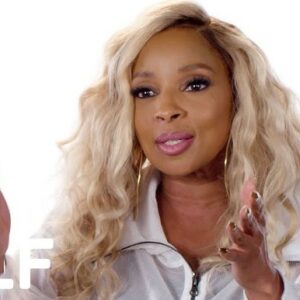Introduction
Kelly Clarkson is no stranger to breaking boundaries. Since winning the inaugural season of American Idol, Clarkson has become a cultural icon with a vocal presence that transcends pop, rock, and country music. With Grammy awards, sold-out tours, and an undeniable connection to her fans, Clarkson’s career reflects the power of evolving alongside industry shifts. Yet, perhaps one of her most impactful contributions has come not only from her artistry but also from her role as a pioneer in music streaming. As an early adopter and advocate for streaming services, Clarkson didn’t just adapt to the streaming era; she influenced it, setting a precedent for how artists and fans connect in the digital age.
From her early promotion of platforms like Spotify and Apple Music to her advocacy for fair artist compensation, Clarkson’s relationship with streaming has changed how music is distributed, accessed, and appreciated. Today, as streaming services continue to redefine the industry, her journey offers a unique insight into how a single artist can wield influence across the music and tech sectors. Clarkson’s story exemplifies the potential of the artist-streaming symbiosis and the way forward in an era where digital media reigns.
Early Adopter and Promoter of Streaming Services
When music streaming first emerged, the industry was still grappling with the decline of physical album sales. For many established artists, the shift from CDs and downloads to digital access felt like a gamble, a threat to traditional revenue streams. Kelly Clarkson, however, embraced this transition with a visionary approach. As one of the first mainstream artists to prioritize streaming, she recognized early on that platforms like Spotify, Apple Music, and YouTube held the future of music distribution.
Clarkson’s adoption of streaming was rooted in accessibility and inclusivity. She leveraged streaming platforms not only to release new music but also to breathe new life into her extensive catalog. With each release, Clarkson expanded her fanbase beyond the limitations of physical sales and radio airtime. Her choice to premiere singles and albums on streaming platforms set a powerful example for other artists. Clarkson’s early endorsement of digital media also signaled to her peers and to record labels that streaming was a viable, perhaps even essential, path forward.
As streaming services matured, Clarkson continued to promote their unique potential. Her work demonstrated to the music industry how digital platforms could offer a new kind of reach, one where fans could discover, engage with, and revisit an artist’s music from anywhere in the world. This foresight wasn’t just a career move; it was a declaration that music had entered a new era, one where fans could access music more conveniently and diversely than ever before. Clarkson’s role in popularizing streaming cemented her place as a forward-thinking artist who prioritized both her fans and the future of music.
Revolutionizing Artist-Fan Interaction
As streaming platforms evolved, so too did the ways artists could interact with their audience. Kelly Clarkson was at the forefront of this shift, recognizing that the benefits of streaming extended beyond album releases. With streaming, Clarkson found a powerful tool to engage with her fans in innovative ways, fostering a deeper connection and offering experiences that transcended traditional boundaries.
Through platforms like Instagram, YouTube, and Twitter, Clarkson began sharing her life and career with unprecedented openness. Virtual concerts, live sessions, and acoustic covers became central to her engagement strategy, giving fans a more personal, unfiltered glimpse into her world. During the pandemic, for instance, Clarkson’s online presence became a lifeline for fans who were craving music and connection during a time of isolation. Her “Kellyoke” segment on The Kelly Clarkson Show, which she made available on streaming platforms, allowed fans to enjoy live renditions of songs both old and new, generating excitement and deepening loyalty among her audience.
Streaming didn’t just make Clarkson’s music accessible; it made her accessible. Fans could see her creative process, witness her spontaneous performances, and feel a closeness that wasn’t possible before streaming. This newfound intimacy reshaped the artist-fan dynamic, giving fans the feeling of being a part of Clarkson’s journey. She opened the door for artists to be more transparent, connecting directly with their audience, and showing that music could be a shared experience, rather than just a product.
Advocating for Fair Compensation
While Clarkson’s embrace of streaming brought undeniable benefits, it also shed light on a significant challenge in the industry: fair compensation for artists. As streaming became the dominant mode of consumption, concerns about payment structures and royalty rates began to take center stage. Clarkson, never one to shy away from speaking up, became an advocate for fair compensation in a landscape where artists often received fractions of a cent per stream.
Clarkson’s advocacy extended beyond her own interests; it was about fighting for a more equitable industry. Recognizing that many emerging artists struggled to make a living from streaming revenues alone, she used her platform to bring attention to the issue. Clarkson’s voice joined a growing chorus calling for reform, pushing streaming services to reconsider their payment models and urging record labels to prioritize artists’ financial well-being.
Clarkson’s advocacy wasn’t just symbolic. She actively participated in industry discussions, lending her star power to a cause that directly impacted the sustainability of the music industry. Her influence encouraged streaming platforms to review their policies and prompted fans to think more critically about how music was monetized. In doing so, she helped shift the conversation, reinforcing the idea that artists deserved fair compensation for their work in a world where streaming had become the primary mode of consumption.
Influencing Industry Trends and Innovations
Clarkson’s influence on streaming didn’t stop at her personal use of platforms or her advocacy for fair compensation. Her success in navigating the digital landscape inspired record labels, artists, and industry professionals to rethink their approach to music marketing and distribution. Clarkson demonstrated that streaming was more than just a tool for releasing music; it was a comprehensive strategy that could boost an artist’s reach, visibility, and longevity.
Her digital strategy became a blueprint for labels, who began to see the potential of streaming beyond simply replacing album sales. Clarkson’s seamless integration of streaming into her career encouraged labels to invest in digital marketing, social media engagement, and streaming-specific promotions. Clarkson’s success illustrated the value of a multi-platform approach, inspiring labels to prioritize streaming platforms and digital channels for both established stars and emerging talent.
Clarkson’s influence also extended to her peers, many of whom followed her lead in embracing streaming. Her willingness to adapt set an example, signaling to other artists that they, too, could benefit from a more digital-forward approach. Through her efforts, Clarkson played a vital role in normalizing streaming, helping it to become not just an option, but the primary way people consume music today. Her impact underscored the idea that in the music industry, staying relevant requires more than just talent; it demands adaptability and a forward-looking mindset.
Promoting Accessibility and Inclusivity in Music
One of the most profound impacts of Clarkson’s adoption of streaming lies in the accessibility it provided. By embracing digital platforms, Clarkson made her music available to fans across diverse regions and demographics, reaching audiences who may not have had access to traditional music outlets. Streaming eliminated many of the barriers associated with physical album distribution, allowing Clarkson’s music to travel farther and connect with a global audience.
Clarkson’s embrace of streaming also contributed to a more inclusive music landscape. With streaming, fans from different cultural, social, and economic backgrounds could access her music at little to no cost. This democratization of access allowed Clarkson to reach audiences who might never have encountered her work otherwise. Fans in countries where music was historically less accessible could now listen to her songs with the same ease as fans in major markets, fostering a global fanbase that reflected the diversity of her music.
Clarkson’s influence on inclusivity extended beyond just accessibility; it also encouraged the music industry to value a more diverse audience. By showing that streaming could open doors to new demographics, she highlighted the importance of catering to a global market. Clarkson’s commitment to accessibility through streaming underscored a powerful message: music should be for everyone, and streaming offered the means to make that vision a reality.
Conclusion
Kelly Clarkson’s journey in the music industry is more than a story of success; it’s a blueprint for adaptation, influence, and advocacy in the streaming era. Her early adoption of streaming, combined with her commitment to fair compensation, accessible music, and direct fan engagement, has left an indelible mark on the industry. Clarkson’s proactive involvement in streaming has not only advanced her career but also helped shape the modern music landscape, paving the way for future artists to thrive in a digital world.
Through her forward-thinking approach, Clarkson has demonstrated the power of embracing change and using it as a tool for growth. Her influence on streaming serves as a testament to the transformative power of technology when wielded with purpose and vision. As streaming continues to evolve, Kelly Clarkson stands as a pivotal figure in its rise—a trailblazer who understood that music isn’t just about creating; it’s about connecting. Clarkson’s legacy in the streaming era is a reminder that in an ever-evolving industry, those who lead are the ones who aren’t afraid to adapt, innovate, and advocate for a better future.





